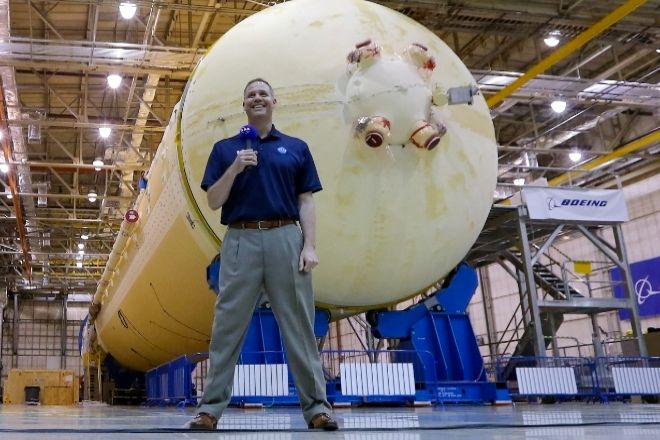- Special: NASA prepares to return to the Moon in 2024
- Comic. What will life be like on our satellite?
- Graphic: Saturn V rocket, in detail
Four hundred thousand people worked over seven years in different NASA centers around the US to build the rocket and modules of the Apollo spacecraft that made it possible to send humans to the Moon for the first time. A huge technical and economic challenge that the space agency faces again to realize the Artemis program (Artemis in Spanish). The new challenge is to send a man and a woman to our satellite in 2024.
The plan is taking shape and, although there are several NASA centers that are working together on the design and manufacture of the various components, the space agency facilities in Alabama have gained an unexpected prominence . This was announced by the director of NASA, Jim Bridenstine, who has decided that the Marshall Space Center of Huntsville (Alabama) will lead the development of the vehicle that will land on the surface of our satellite ( lander ), one of the few main components that It was not yet assigned and practically the only one that will be designed specifically for the Artemis program.
The city of rockets
The Marshall Space Center of Alabama, which already had a prominent role in the Apollo program, is popularly known as the city of rockets because it was there where the Saturn V rocket was designed in which the Apollo spacecraft was launched. There, the equally impressive rocket of the Artemis program, the Space Launch System (SLS), designed for another lunar program that was canceled, has also been developed for years, so it has not yet been released on any mission.
The announcement was made by Bridenstine in Alabama last Friday in front of one of the SLS test prototypes. According to the director of the space agency, his plan to return to the Moon is based on the concept that "NASA is one" but uses the technological capabilities of many of its centers : "Marshall has the perfect combination of knowledge and experience to realize this critical component of the mission, "Bridenstine said.
Angry in Houston
But the new award to Alabama has bothered several Texas senators, who were confident that such an important part of the mission for both its complexity and its symbolism as the lander would be developed at the facilities of the Houston Johnson Space Center, considered the NASA brain and home of manned flights.
It is in this Texan city where among other functions, astronauts are trained and the main manned programs - current and future - are directed, such as the activities of the International Space Station (ISS), the Orion spacecraft (which will travel to the Moon) and the future lunar orbital station Gateway. Also from here the Artemis program missions will be directed and the coordination between the astronauts and the team that develops the module will be monitored.
To such an extent it has bothered them that Houston has a secondary role in the mooncatcher that in an open letter, Texas senators Ted Cruz, John Cornyn and Brian Babin have asked NASA's director to reconsider his decision: "The Johnson Space Center He has led the manned spaceflight for more than half a century ... Houston was one of the first words spoken in the Luuna ... and it should be in this city where the lander [lander] put back to develop again to Americans on the surface of the Moon, "says the letter, released Thursday, the day before the official announcement, when they learned about Bridenstine's plans. That same Thursday, the director of NASA supervised the liquid hydrogen tank of the SLS rocket at the NASA Michoud integration center in New Orleans.
It is estimated that the lander project will create about 360 jobs, 140 in Huntsville and the rest distributed by other NASA centers, according to Mo Brooks, a member of the US House of Representatives for the state of Alabama. However, that the Marshall Center of that state leads the development of the lander does not mean that it is physically built within its facilities as NASA is expected to use private partners to accelerate the work.
According to the criteria of The Trust Project
Know more- Science and Health
- science
ScienceTwo meters and 400 kilos: discover in France the monumental bone of a 50-ton dinosaur
Science Japan gives the green light to the experiment of a team of scientists to create human-animal hybrids
Interview Lewis Dartnell, astrobiologist: "The Earth made man and now it is the other way around"

